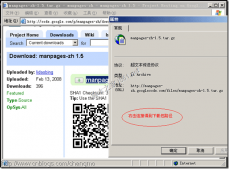|
1
2
3
|
/******************** * 内核中链表的应用 ********************/ |
(1)介绍
在Linux内核中使用了大量的链表结构来组织数据,包括设备列表以及各种功能模块中的数据组织。这些链表大多采用在include/linux/list.h实现的一个相当精彩的链表数据结构。
链表数据结构的定义很简单:
|
1
2
3
|
struct list_head { struct list_head *next, *prev;}; |
list_head结构包含两个指向list_head结构的指针prev和next,内核的数据结构通常组织成双循环链表。
和以前介绍的双链表结构模型不同,这里的list_head没有数据域。在Linux内核链表中,不是在链表结构中包含数据,而是在数据结构中包含链表节点。如:
|
1
2
3
4
5
|
struct my_struct{ struct list_head list; unsigned long dog; void *cat;}; |
linux中的链表没有固定的表头,从任何元素开始访问都可以。遍历链表仅仅需要从某个节点开始,沿指针访问下一个节点,直到又重新回到最初这个节点就可以了。每个独立的节点都可以被称作是链表头。
(2)链表的初始化
a.静态
如果在编译时静态创建链表,并且直接引用它,如下:
|
1
2
3
4
5
6
7
8
|
struct my_struct mine={ .lost = LIST_HEAD_INIT(mine.list); .dog = 0, .cat = NULL};//或static LIST_HEAD(fox);/*等于struct list_head fox = LIST_HEAD_INIT(fox); */ |
b.动态
|
1
2
3
4
5
|
struct my_struct *p;p = kmalloc(GFP_KERNEL, sizeof(my_struct));p->dog = 0;p->cat = NULL;INIT_LIST_HEAD(&p->list); |
(3)操作链表
内核提供了一组函数来操作链表。
注意!这些函数都使用一个或多个list_head结构体指针作参数。定义在<linux/list.h>
a.增加节点
|
1
2
3
|
list_add(struct list_head *new, struct list_head *head);//向指定链表的head节点后面插入new节点 |
b.把节点增加到链表尾
|
1
2
3
|
list_add_tail(struct list_head *new, struct list_head *head);//向指定链表的head节点前面插入new节点 |
c.从链表删除一个节点
|
1
2
|
list_del(struct list_head *entry);//将entry从链表中移走 |
d.把节点从一个链表移到另一个链表
|
1
2
|
list_move(struct list_head *list, struct list_head *head); |
从一个链表中摘除list项,然后将其插入head的后面
|
1
|
e.list_empty(struct list_head *head); |
链表为空返回非0值,否则返回0
f.合并链表
|
1
2
3
|
list_splice(struct list_head *list, struct list_head *head);//注意!新的链表不包括list节点 |
(4)遍历链表
链表本身不重要,访问到那个包含链表的结构体才重要
a.从链表指针获得包含该链表的结构体的指针
|
1
2
3
|
list_entry(struct list_head *ptr, type_of_struct, field_name); |
- ptr: list_head指针
- type_of_struct: 包含ptr的结构体类型
- field_name: 结构体中链表字段的名字
如:
|
1
|
my_struct *p = (list_head *ptr, my_struct, list); |
b.遍历链表
|
1
2
3
4
|
list_for_each(struct list_head *cursor, struct list_head *list);//常常和list_entry配套使用//注意!用list_for_each遍历时,不包括头节点 |
c.遍历的同时获得大结构体指针
|
1
2
3
|
list_for_each_entry(type *cursor, struct list_head *list, member); |
d.遍历链表的同时释放每个被遍历到的节点
|
1
2
3
4
|
list_for_each_entry_safe(type *cursor, type *tmp; struct list_head *list, member); |
总结
以上就是这篇文章的全部内容了,希望本文的内容对大家的学习或者工作具有一定的参考学习价值,谢谢大家对服务器之家的支持。如果你想了解更多相关内容请查看下面相关链接
原文链接:https://blog.csdn.net/morixinguan/article/details/79706265
















